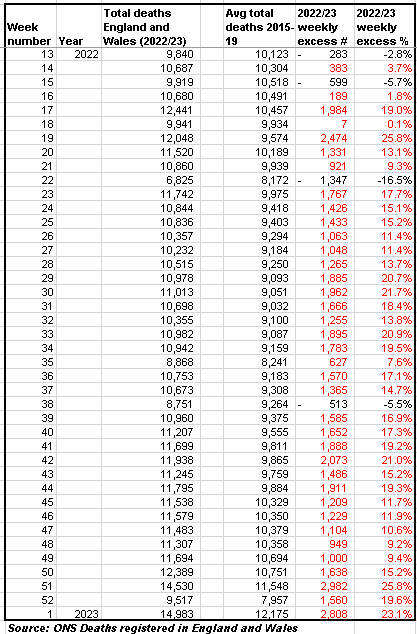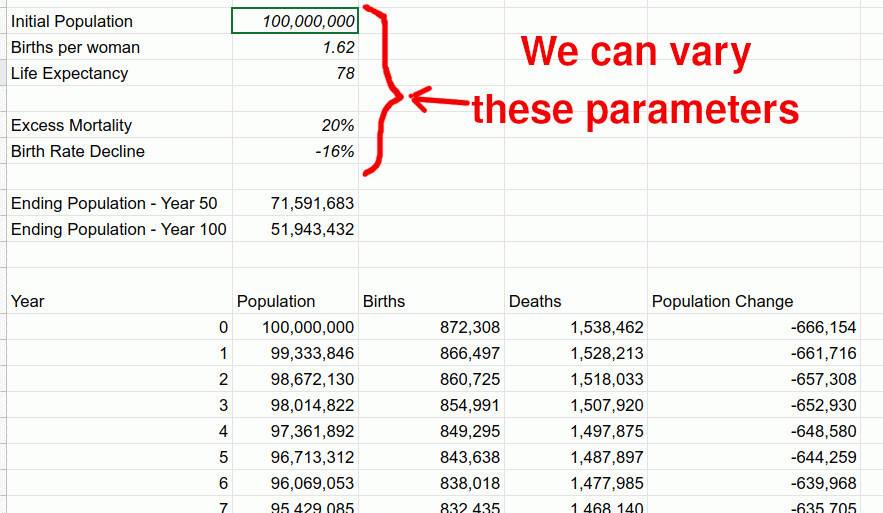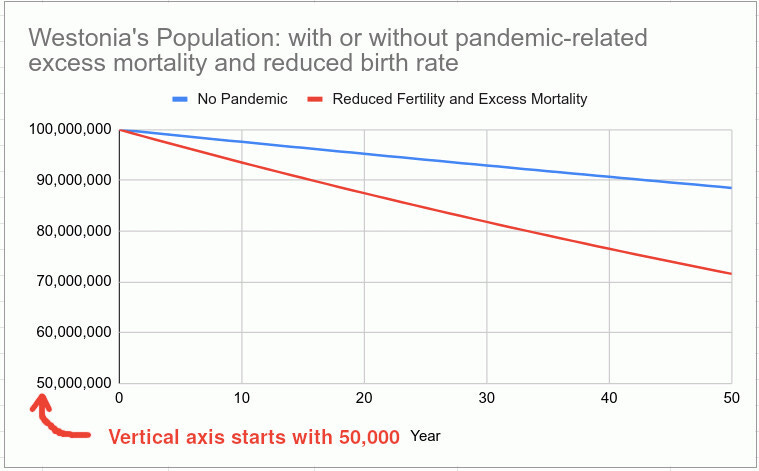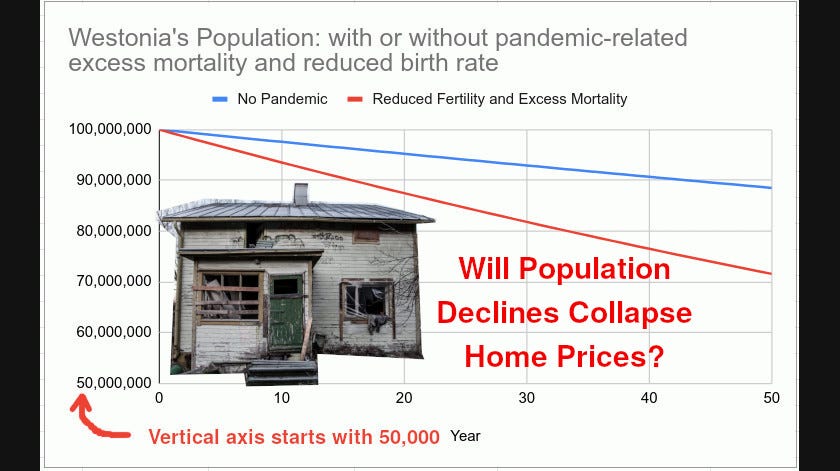Changes will be Slow - but Will Impact Demand for Housing
SUMMARY: This post will try to take a calm look at the bad news. I will show that while we have much to worry about, no imminent demographic catastrophe is coming unless trends worsen. The current tendencies will soon affect demand for housing, leading to a population-driven decline in real estate values.
Some Demographic News
A few current mortality and birth rate news first:
Sweden's live births for November were just published, and they are down 12% year-on-year
Sweden’s excess deaths last week were approximately 17% of normal
UK’s last few weeks excess deaths are also very high at about 20% of normal
The UK calculates “excess mortality” based on the previous five years’ average. This, unfortunately, includes 2020 and 2021, which saw excess deaths due to Covid and Covid vaccination. So, the excess mortality for 2022 is therefore understated. Someone did a great job calculating excess mortality based on the 2015-2019 average instead:
Reasons to Stay Calm
This mortality and birth rate news is unfortunate. More than usual, people’s friends, relatives, and loved ones lose their lives. The birth rate news is disappointing: families wanting to have a child may not be able to conceive the baby they dream of having. Each life is valuable, and each death is tragic.
Does it mean that under the current trends, the society we are used to will disappear in a few years? No.
Demographic changes are slow. I created a simple model in a spreadsheet that simulates population trends over the next 50 years. There are parameters, such as the current birth rate, life expectancy, and fertility (number of births per woman) pre-pandemic.
This is a very simplistic model because I am not a demographer. However, it generally captures the essence of demographics and demonstrates what would happen under various assumptions. It calculates:
The number of infants born per year, based on the birth rate
The number of deaths per year, based on the death rate
Consider a hypothetical country, let’s name it Westonia, with exactly 100,000,000 population. Westonia’s life expectancy is 78 years, and the fertility rate is 1.62 children per woman. This is generally in line with the UK, for instance.
Every year, one out of 78 Westonians dies, and 1.62/2/78 = 0.01 children per person are born. For simplicity, I assume Westonia does not allow immigration or emigration.
We can make two projections: the population at the exact parameters above (no pandemic or vaccines) or the population with excess mortality and birth rate decline factored in (with currently observed mortality and birth rate effects).
We can develop two population projections for the next 50 years: one continuing the pre-pandemic trends and another including excess mortality and reduced birth rate. For example, let’s incorporate 20% excess mortality and 16% reduced birth rate, sort of the worst of what we are seeing now.
The table would begin like this:
Here’s the chart of 50-year trends comparing demographics of Westonia “without pandemic” vs. “with reduced birth rate and excess mortality.”
If the pandemic did not happen, Westonia would have 88.5 million people after 50 years. With reduced births and increased mortality, Westonia would only end up with a population of 71.6 million. The pandemic-related reduction of Westonia’s population is 16 million people. Our hypothetical country would have 24% more people at year 50 had the pandemic not occurred!
Is Westonia, and our green planet, better off with the reduced population? People can have different opinions on this. Let us know what you think.
The important thing is that Westonia would not rapidly “die off” under the current trends — and the population would shrink very slowly.
Real Estate Prices May Suffer
In the long run, the real estate market is driven by population and household formation.
For example, if a family of two occupies an apartment, it would conceivably start looking for a single-family home after a baby is born.
Similarly, imagine an elderly couple living in a single-family home. If one of the spouses dies, the remaining widower will likely consider selling the home and moving to an apartment.
The problem is that if births are reduced and deaths are increased, the single-family home mentioned above may not find willing buyers!
The effect is not small: in our hypothetical Westonia, during the first year, there will be 166,154 fewer births and 256,410 more deaths, making the combined demand deficit 166154+256410 = 422,564 person-units!
In the US (330 million population,) about 6 million homes are sold yearly. For Westonia, with 100,000,000 people, the comparable annual sales would be about 1.81 million homes. How will the demand deficit of 422,564 “missing persons” affect the market of 1,810,000 homes sold annually?
It would greatly depress home prices!
So home prices may decline, and new construction of homes would not be as economically justified. These market effects greatly depend on our assumptions, of course.
Such home value projections would also be strongly impacted by immigration, which we assumed does not occur to simplify our model. Even then, the effect of reduced births and increased deaths would still depress home prices.
This is not a Prediction of the Future!
The future is very difficult to predict. Our birth rates could recover. Our death rates could return to normal. This is what I want to happen.
Unthinkably, mortality and birth rates could also get much worse. I have no idea what the future will bring.
The point of the exercise above is to show that the current negative changes would only “move the needle” of population count very slowly over decades.
This means we have time to sound alarms, convene committees, do proper scientific research, and we are not facing any immediate die-off.
Your guess about what will happen to the future is as good as mine. Will birth rates recover? Will deaths go back to normal rates? Are homes still a good investment? Let us know what you think.
You're currently a free subscriber to Igor’s Newsletter. For the full experience, upgrade your subscription.




